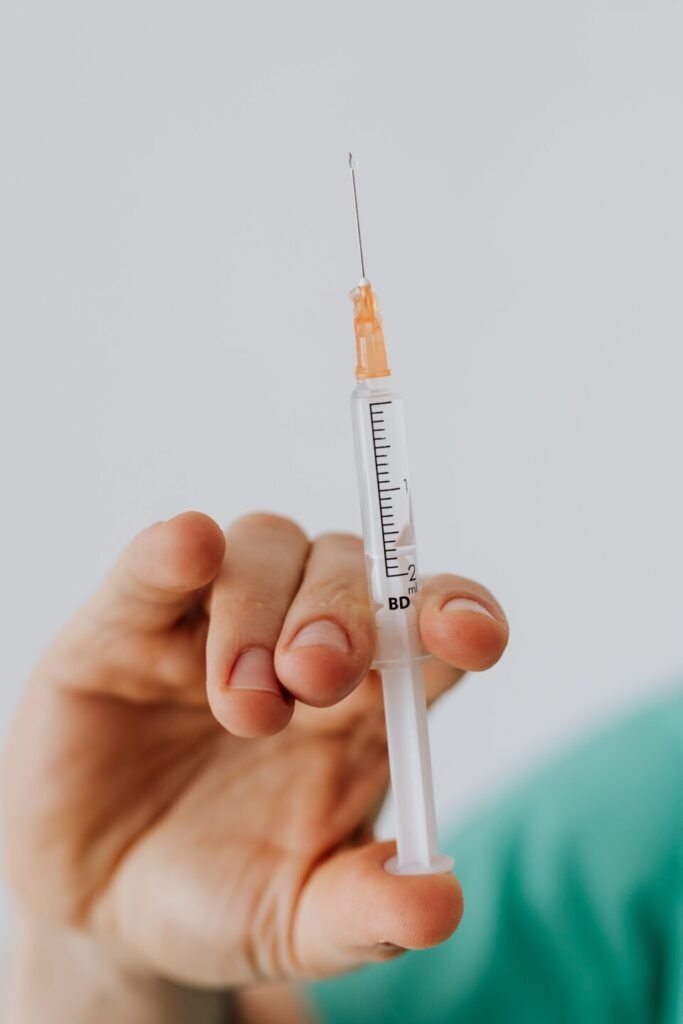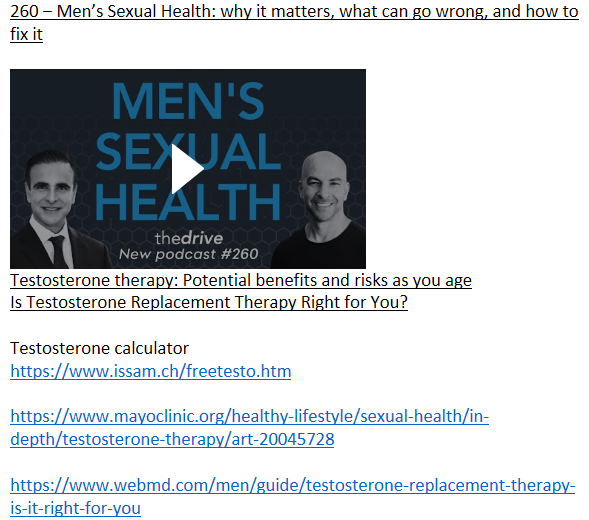
We’re diving deep into the topic of low testosterone and testosterone replacement for men. Exploring its risks, benefits, and alternatives. It’s crucial to understand this subject thoroughly, as taking testosterone when you don’t need it can have serious consequences for your health. So, let’s get started on this journey of discovery.
Understanding Low Testosterone: What You Need to Know
Low testosterone, or “low T,” is a condition that affects many men as they age. It’s characterized by a drop in testosterone levels, which can lead to various physical and emotional symptoms. But before you rush to take testosterone as a hormone replacement therapy, it’s essential to assess whether it’s the right choice for you.
Symptoms of Low Testosterone: When Should You Consider Treatment?
Low testosterone can manifest in various ways, impacting your libido, muscle strength, mood, sleep, workout recovery, bone density, fat distribution, and sperm production. Some individuals may also believe it helps with erectile dysfunction, though research suggests otherwise. However, it’s essential to remember that not everyone with these symptoms needs testosterone therapy. Consulting a reputable doctor is crucial to determine if you genuinely have low testosterone.
The Dangers of Misguided Testosterone Use
Taking testosterone without a proper diagnosis can be a grave mistake. Just as with any medical treatment, it’s vital to work with a qualified healthcare professional who can assess your specific needs. Avoid falling for quick-fix solutions peddled by unscrupulous sources, such as online advertisements or gym bros offering advice.
Some side effects include:
- Sleep loss
- Acne
- Hair growth
- Hair loss
- Sleep Apnea
- Increased risk of heart attacks and strokes
- Reduced sperm production – infertility
- Estrogen conversion – breast tissue, and prostate enlargement
For younger men who are still interested in having children, taking Testosterone can cause infertility.
The Complexities of Testosterone Replacement
Understanding testosterone replacement therapy requires familiarity with the intricacies of hormone levels in the body. Only 2% of testosterone circulates freely in the bloodstream, known as “free T,” and this is what correlates with symptoms. Determining the ideal testosterone level for an individual can be challenging, as age-specific data is scarce, with limited information available for different age groups.
The Temptation of Testosterone: A Personal Journey
My own experience with testosterone replacement is worth sharing as it sheds light on the complexity of this treatment. I began questioning my usage when Phoebe embarked on her research journey, uncovering that the touted benefits might not be as miraculous as they seemed.
I asked myself, “Have I been sold a bill of goods? Am I taking something I don’t truly need?” It’s important to note that I wasn’t grappling with libido issues. Instead, I was intrigued by the long-term preventive potential of testosterone replacement.
While I did observe some muscle growth during my testosterone therapy, I soon realized that this growth was closely linked to my increased exercise regimen. In essence, consistent workouts alone might have yielded similar results.
To gain further clarity, I delved into my medical history. I meticulously reviewed my test results spanning from 2015 to 2022, encompassing the period when I initiated testosterone therapy. In 2015, my free testosterone level stood at 1.98%, hovering near the 2% mark, the normal and expected amount of free testosterone.
However, by February 2022, I observed a decline in my testosterone levels, dropping to 1.51%. Fearing low testosterone, I commenced the treatment. Remarkably, my levels rebounded, reaching 2.09% by March 2022 and soaring to 2.67% in July.
Yet, upon deeper reflection, I realized that even at 1.5%, my testosterone levels weren’t exceedingly low and I exhibited no other symptoms. Furthermore, my non-free testosterone levels appeared within the healthy range. These revelations led me to question whether I genuinely suffered from low testosterone.
It’s essential to understand that my personal health statistics shouldn’t dissuade anyone from considering testosterone therapy if they genuinely exhibit symptoms. If you find yourself grappling with low testosterone symptoms, I strongly recommend consulting a healthcare professional. They can help you determine if testosterone replacement aligns with your health needs, ensuring a well-informed decision-making process.
Methods of Testosterone Administration: What You Need to Know
When it comes to administering testosterone, it’s essential to consider the methods available, each with its own set of advantages and drawbacks. Let’s explore these options to help you make an informed choice.
1. Patches and Gels: One might wonder why men can’t simply take testosterone orally like some hormone treatments for women. There are two primary reasons. Firstly, men naturally have a significant amount of testosterone circulating in their bodies, far more than women, as it’s their primary hormone. Consequently, patches and gels prove to be effective methods for testosterone replacement. However, it’s crucial to be aware of potential side effects when applying substances to your skin. Factors like excessive body hair, improper application, or insufficient dosage can lead to issues. Plus, these topical treatments can be messy and inconvenient, restricting physical contact with your partner until the testosterone is fully absorbed.
2. Pellets: Pellets offer a unique time-release method of testosterone replacement. They are injected into the fatty tissues, typically in the side area. The appealing aspect of pellets is their infrequency – a single injection every three to four months ensures a steady release of testosterone over time. However, this method has its drawbacks. Men, who typically have less body fat than women, may find the injection process painful and uncomfortable. It can lead to soreness for several weeks, affecting sleep and overall comfort. Additionally, the injection site may result in distinctive half-moon scars.
3. Injections: Daily injections with a hypodermic needle present another option. Unlike the traditional bi-weekly or weekly injections, daily doses are smaller and subcutaneous, meaning they are injected into fatty deposits rather than muscle. This approach aims to maintain a consistent testosterone level in the body, reducing the highs and lows seen with other methods. However, some may find the thought of daily injections daunting, and the subcutaneous process may still cause discomfort, especially for individuals with a lean physique.
Choosing the right method for testosterone replacement should depend on your specific needs, preferences, and tolerance for discomfort. Keep in mind that no method is entirely without drawbacks, and it’s essential to consult a healthcare professional to determine the most suitable approach based on your individual circumstances.
When to Consider Testosterone Replacement Therapy
It’s important to note that not everyone with low testosterone levels requires treatment. If you have low testosterone and experience symptoms, it’s wise to discuss your options with a knowledgeable healthcare provider. However, treatment isn’t recommended for those with low testosterone solely due to aging, as the risks may outweigh the benefits.
Preventative Measures: Achieving Health and Vitality Without Testosterone
Before considering testosterone therapy, consider alternative methods to improve your health and vitality. Diet, exercise, and quality sleep can have a significant impact on your overall well-being. These lifestyle changes can help you achieve the benefits you desire without the potential risks associated with testosterone replacement.
Conclusion: Proceed with Caution
In conclusion, testosterone replacement therapy can offer relief to individuals with low testosterone and related symptoms. However, it’s vital to approach this treatment with caution. Understand the risks, consider alternative approaches, and work closely with a qualified healthcare provider to make informed decisions about your health and well-being. Remember that the pursuit of good health should prioritize safety and evidence-based practices over quick fixes and promises of eternal youth.
Want More?
If you want more, or simply want to listen or watch us, check out our podcast and YouTube here!
Sources






